Located in Aso City, Kumamoto Prefecture, Aso Shrine (阿蘇神社) is one of the most important and historic shrines in the region—and one of the few in Japan that enshrines a volcano god. It houses 12 deities, all of whom are family members, making it a spiritual spot for prayers related to love, health, career, and academic success.
Next to the shrine is a charming monzen shopping street, where you can enjoy local food and join a “water pilgrimage” to explore Aso’s famous spring water. (Check out our separate feature on that!)
⛩ Highlight #1: The Tower Gate (楼門), a National Important Cultural Property
Aso Shrine’s iconic two-story tower gate is one of the “Three Great Tower Gates of Japan.” It was heavily damaged in the 2016 Kumamoto Earthquake, but because it is designated as a National Important Cultural Property, its restoration was carried out using original materials and traditional carpentry techniques.
In contrast, the rear worship hall (拝殿)—which was not listed as a cultural property—was rebuilt more quickly using local Aso timber.
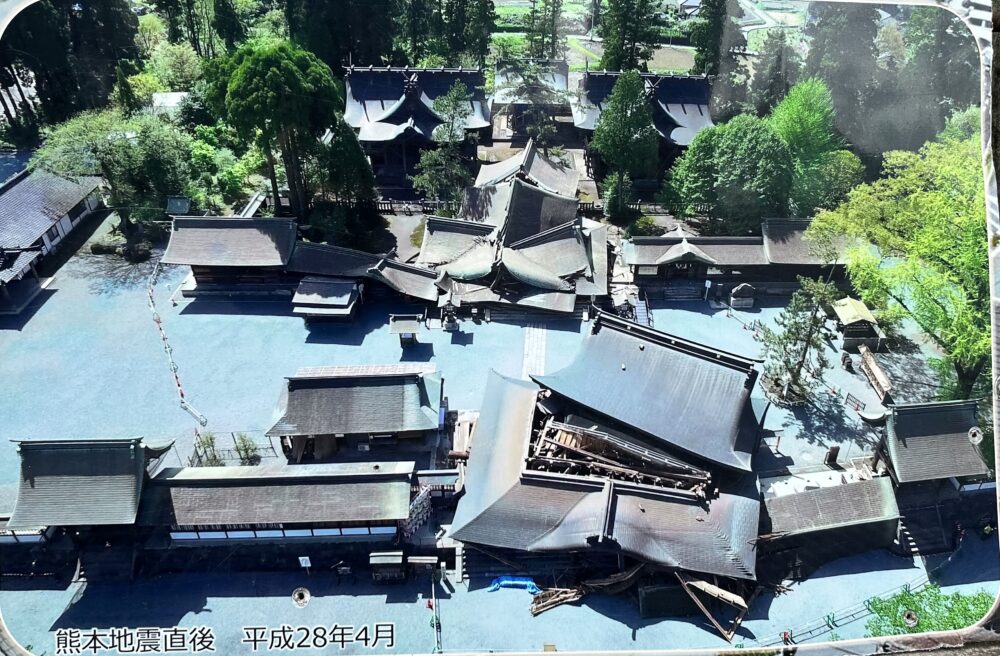
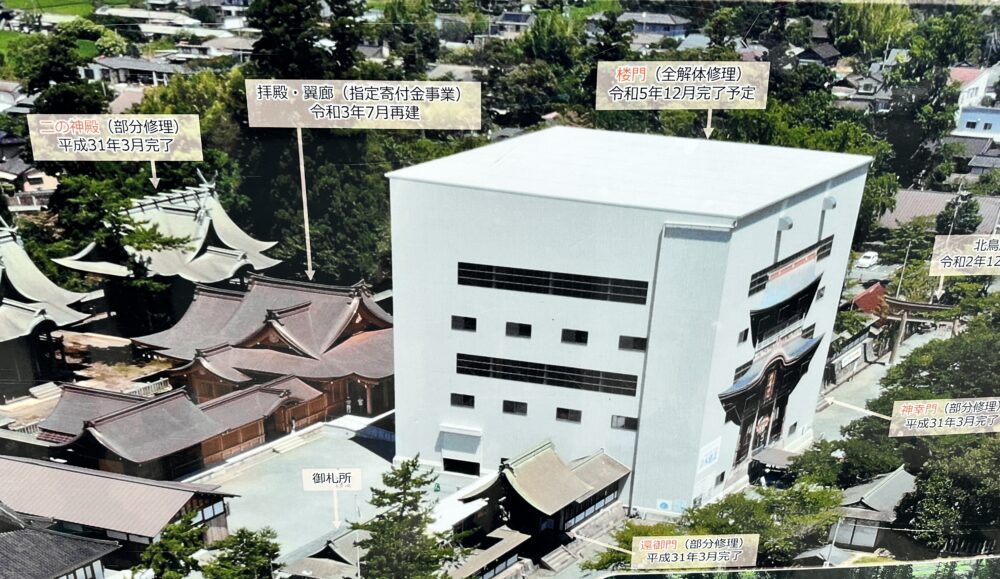
A Historic Surprise During Restoration
During the gate’s restoration, craftsmen found the original builder’s signature written on the structure. He was only 22 years old when he started building it. Even more impressively, he was also scouted to fix Kumamoto Castle in his 30s!
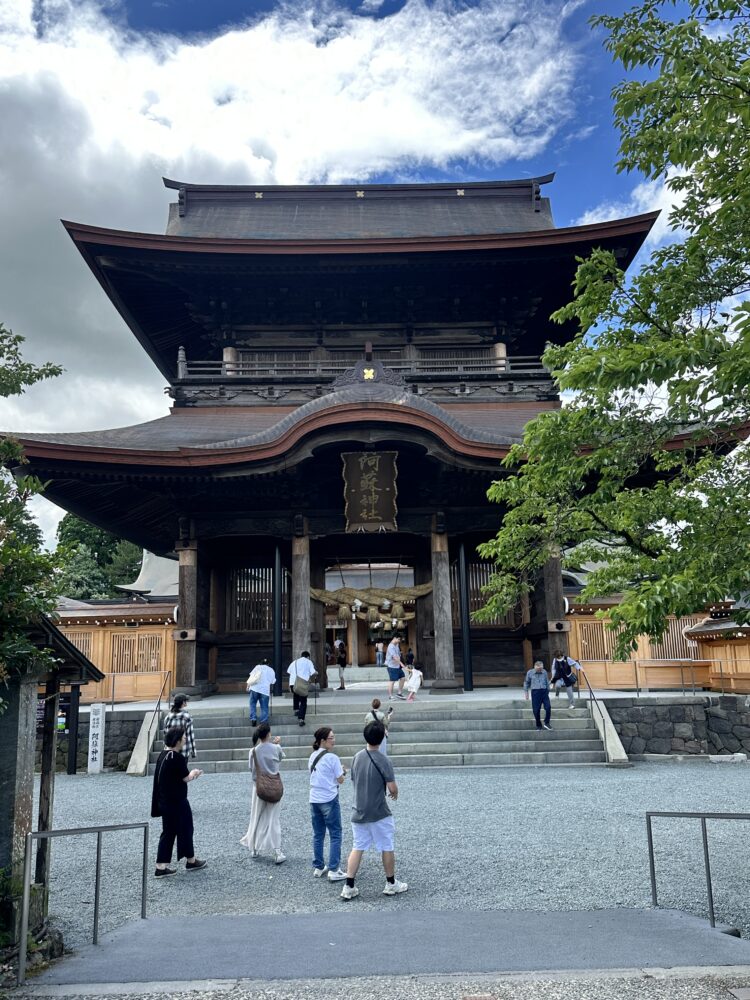
Sustainable Aesthetics in Japanese Architecture
Damaged columns at Aso Shrine are not completely replaced. Instead, they are carefully patched using new wood—and the patchwork is intentionally left rough and visible. As Kana-san (our local guide) explained, this reflects the Japanese philosophy of timeless design: “Shrines aren’t built to look new now—they’re built to blend beautifully 100 years from now.”
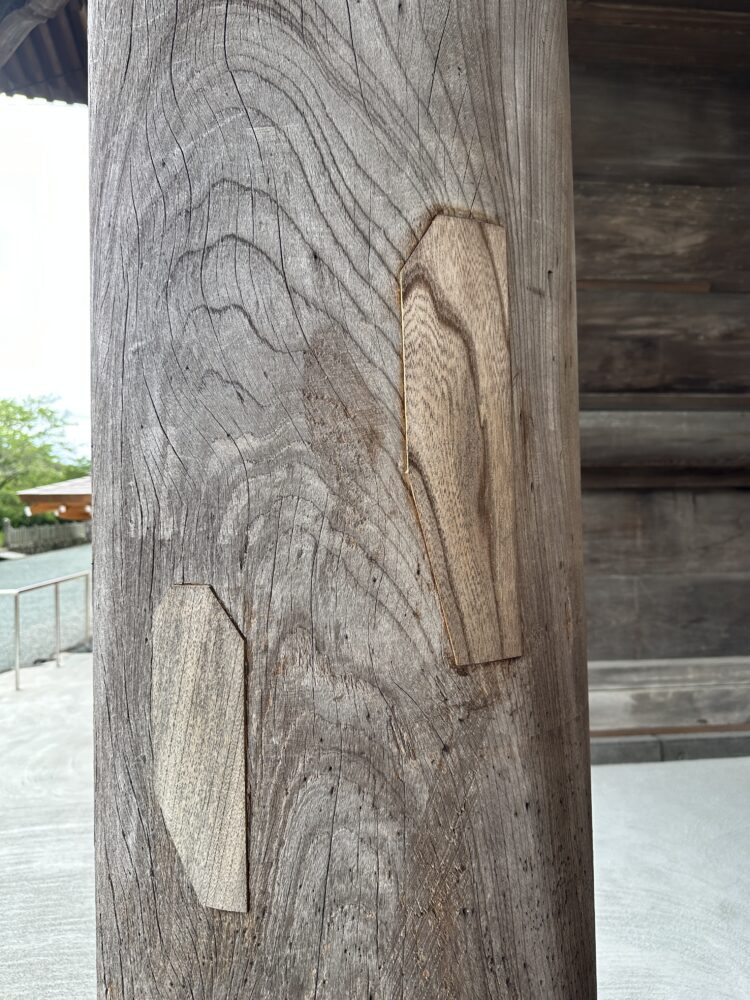
💧 Highlight #2: Sacred Spring Water at the Chōzuya (Hand-Purification Fountain)
Like most Japanese shrines, Aso Shrine has a purification ritual at its entrance. Instead of traditional ladles, it now features a bamboo pipe system with several small holes that pour out clean spring water. This natural spring flows from underground and remains at 13°C year-round—warm in winter, cool in summer. A natural wonder of Aso!
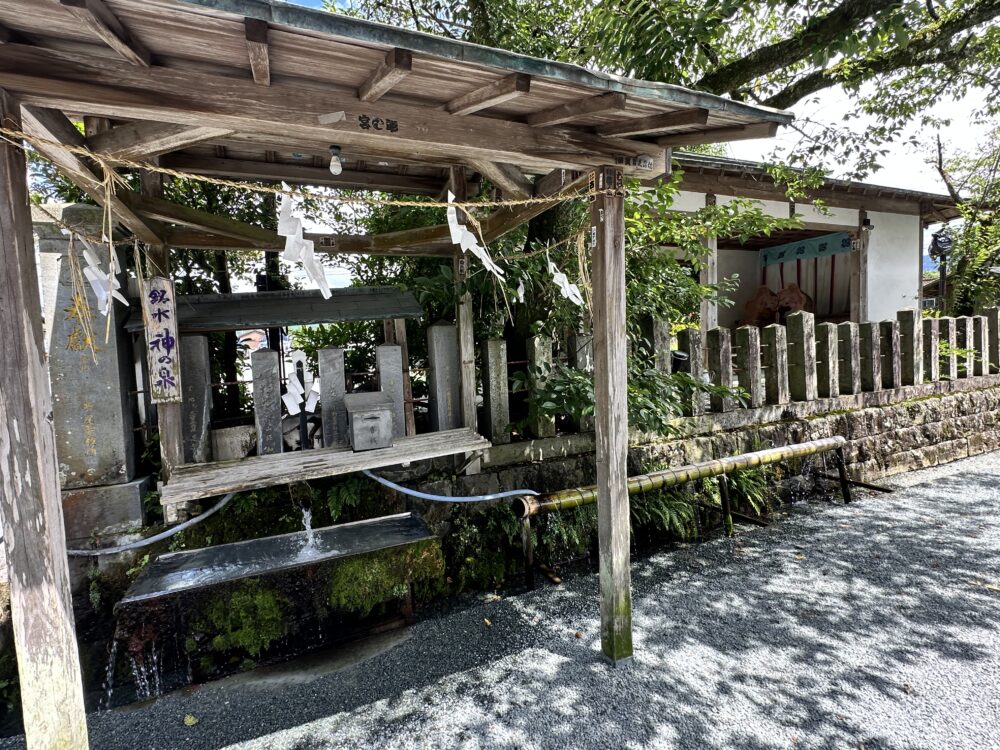
🔺 What’s Unique About the Torii Gates?
Unlike most shrines where torii gates stand directly in front of the main path, Aso Shrine’s gates are located on both sides of the tower gate. One gate faces Mount Aso, symbolizing the direction from which the gods arrive. This emphasizes the shrine’s deep connection with the volcano deity. The other gate leads to the monzen shopping street and connects to a secondary shrine dedicated to the volcano god’s son.
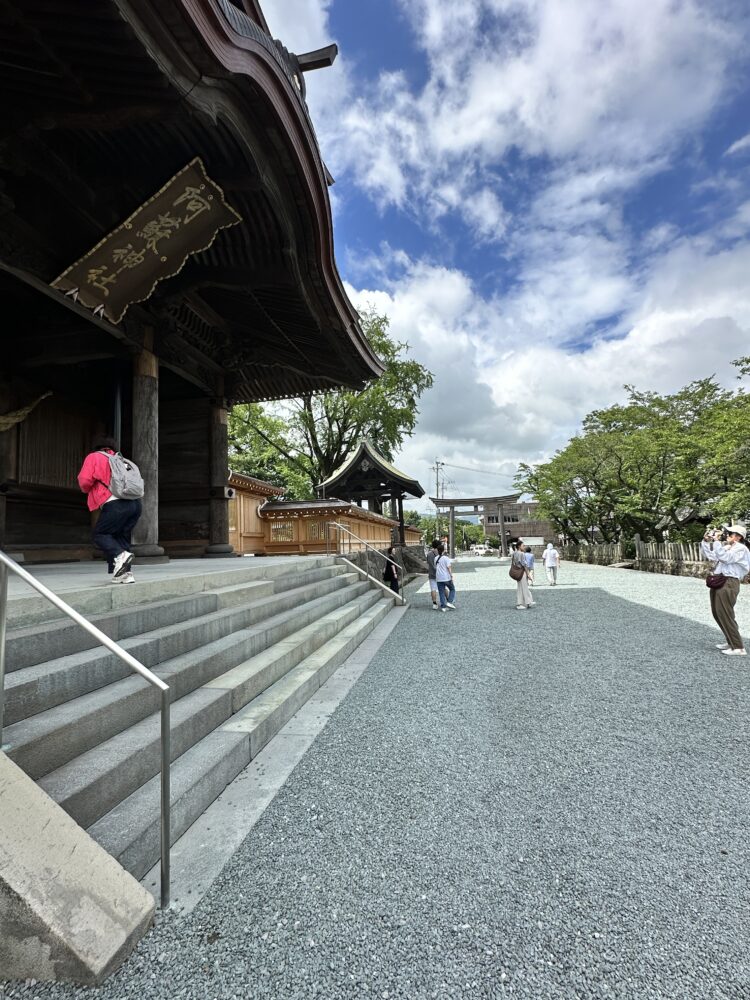
🏯 How to Worship at Aso Shrine
- Bow once before entering the tower gate.
- Walk under the shimenawa (sacred straw rope).
- At the main worship hall:
• Toss a coin
• Bow twice
• Clap twice
• Make your wish
• Bow once again
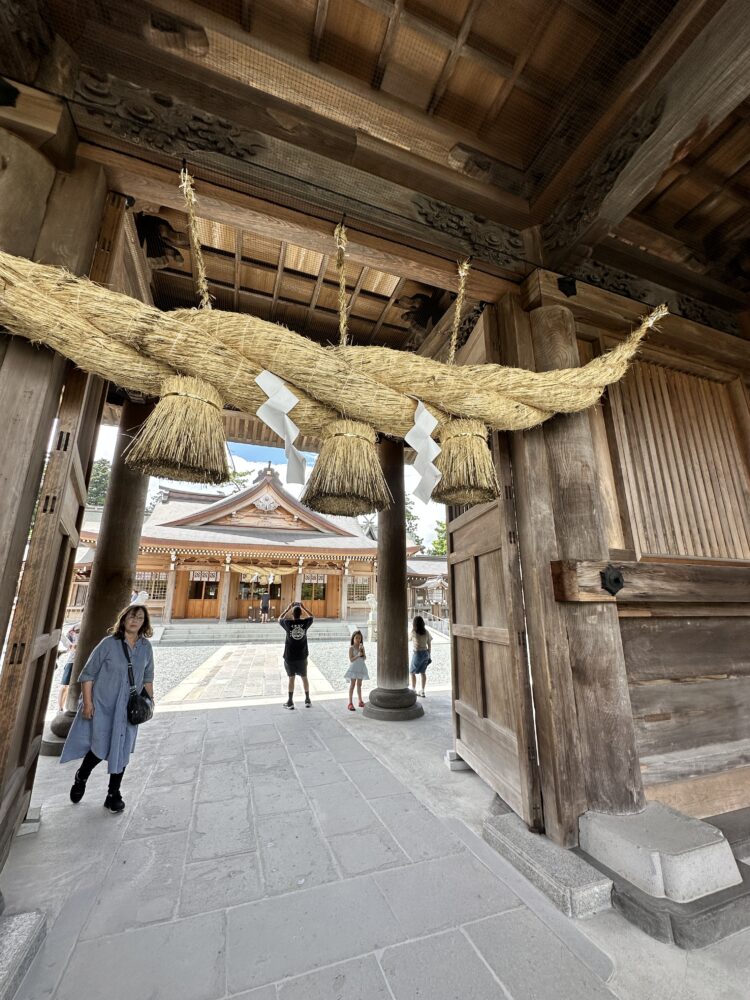 Behind the hall are sacred areas where the male and female gods reside—the male deity is on the left (with dragon carvings), and the female is on the right. These inner sanctuaries are off-limits to visitors and even shrine priests must bow deeply when cleaning the space.
Behind the hall are sacred areas where the male and female gods reside—the male deity is on the left (with dragon carvings), and the female is on the right. These inner sanctuaries are off-limits to visitors and even shrine priests must bow deeply when cleaning the space.
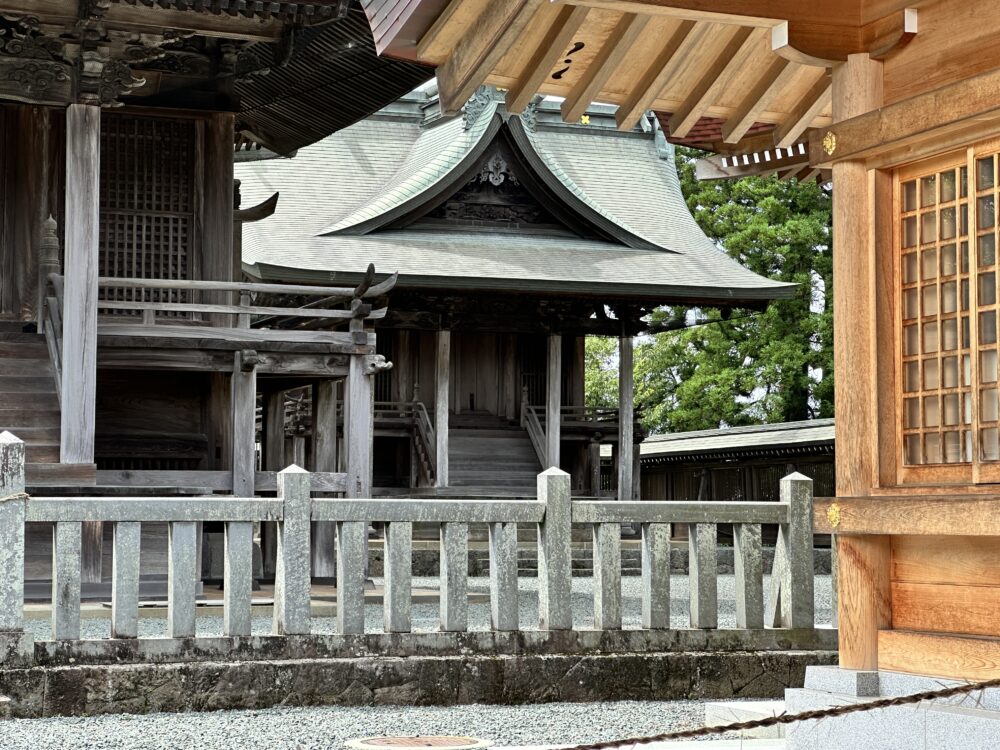
💞 Love Power Spot: The Wishing Stone & Enmusubi Tree
To the right of the entrance, you’ll find a sacred tree and ancient stone believed to bring good relationships. Walking around the tree twice is said to invite romance. Kana-san told us her friend met his life partner thanks to this tree!
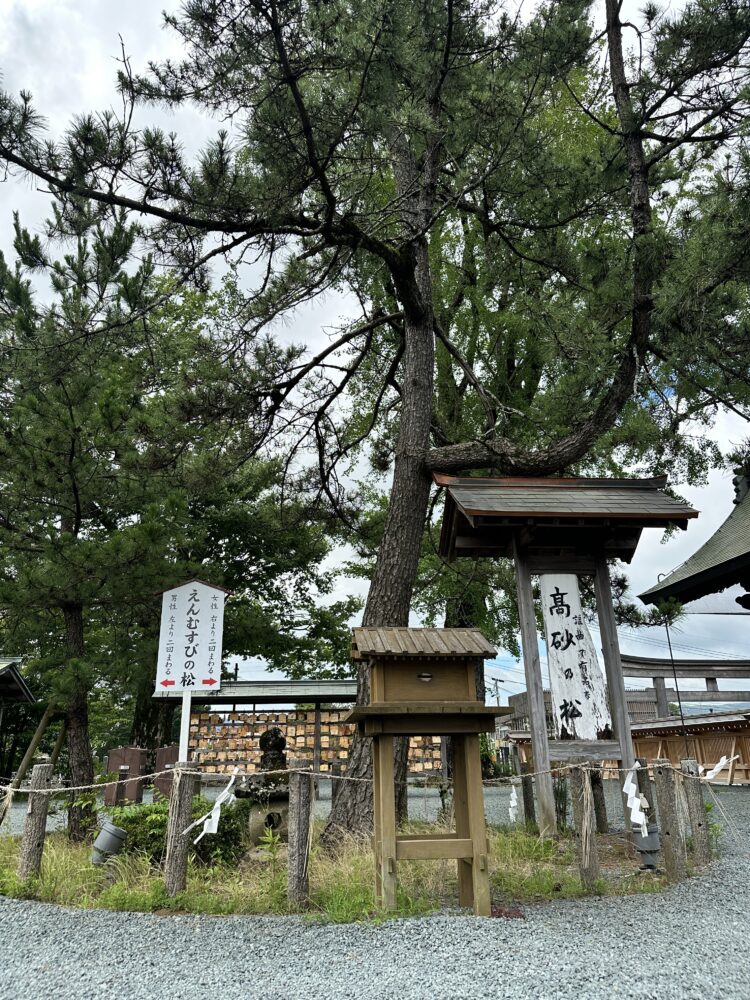
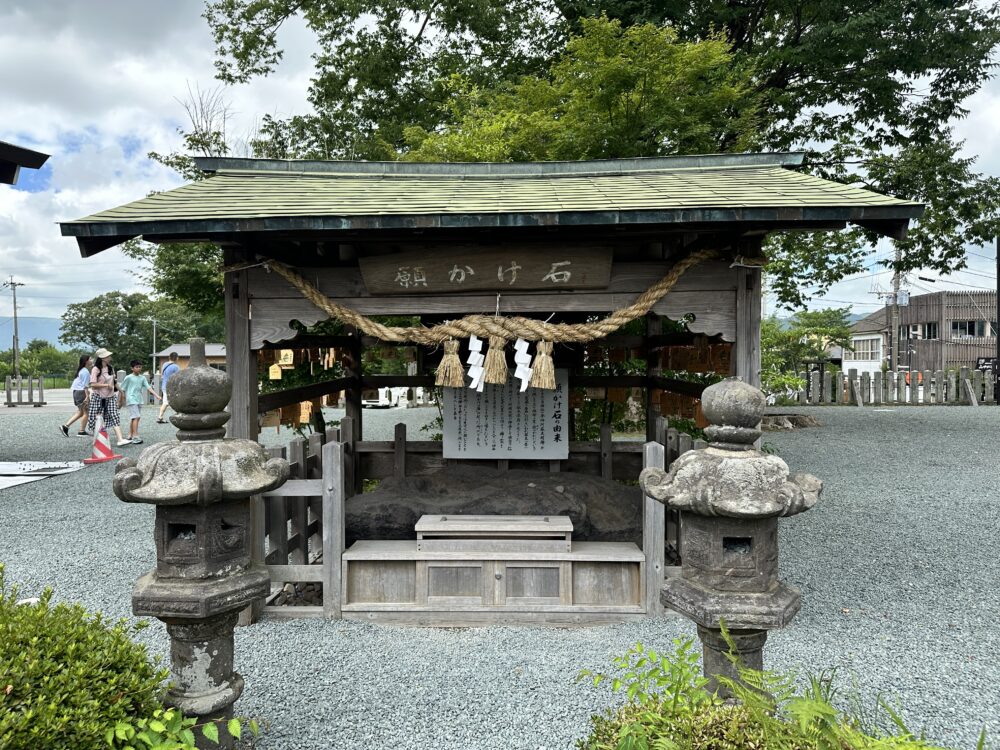
🎁 What to Buy: Omamori & Seven Lucky Gods Charms
Aso Shrine offers a wide variety of omamori (Japanese talismans) tailored to different needs—love, health, exams, work, and more—thanks to its 12 enshrined deities.
Bonus for anime fans: If you’re into Record of Ragnarok (終末の女武神), you’ll love the Seven Lucky Gods fortune slips, inspired by the comic series.
🛍 Don’t Miss the Monzen Shopping Street
After visiting the shrine, stroll through the monzen shopping street next door. Try local sweets, shop for souvenirs, or enjoy a meal at one of the family-run eateries. (We also made a separate post to guide you through the best spots!)
~Edited by intern Shenny at Michi-no-Eki Aso

